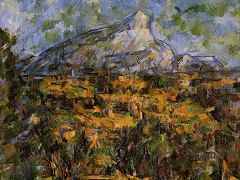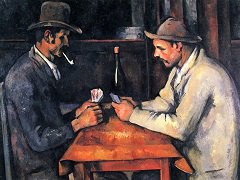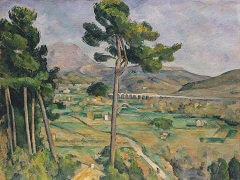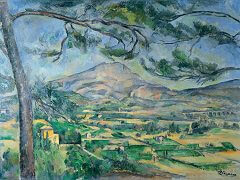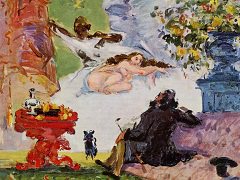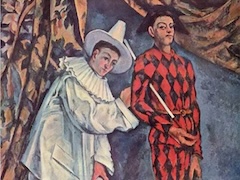The Large Bathers, 1898-1905 by Paul Cezanne

The Large Bathers, 1898-1905 is the largest of Cezanne's pictures and because it is also the most formal in aspect, it has been cited often as an example of his ideal of composition and his restoration of classic monumentality after its lapse during the nineteenth century. It is exceptional among his work, however, in the marked symmetry and the adaptation of the nude forms to the triangular pattern of the trees and river. There is here, a search for constraining forms, an over-determined order which has to do with Cezanne's anxiety about women. Beautiful as it is, the composition is not the typical Renaissance pyramid, for the largest figures and the greatest compactness are in smaller pyramids at the sides; the central part, which is usually filled by a dominant object, is empty or unstressed, and the apex is intercepted by the frame. The triangle here is a form of constraint, with another expression than the older solemn design.
The formalism of this picture is the culmination of a lifelong concern with the problem. For thirty years, in paintings of women bathers, he arranged the nudes in a triangle, closed off by inclined trees, while the male nudes were grouped less compactly in a rhythm of a B a B a, open at the sides and giving an equal importance to the two large figures of whom one and sometimes both are seen from behind.
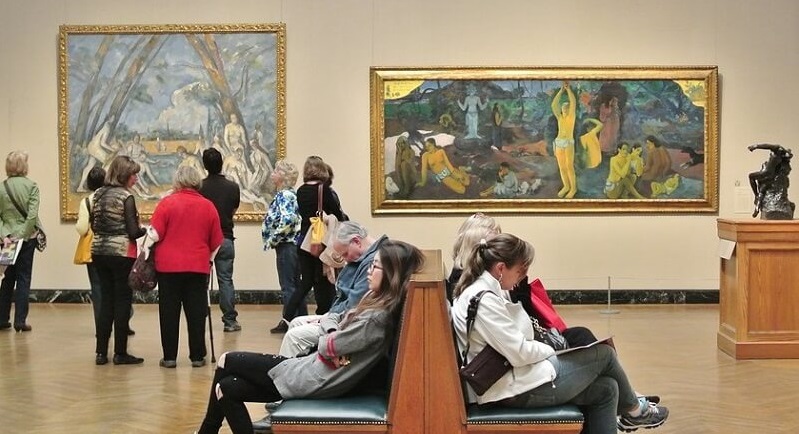
It is permitted to suppose that these two conceptions originate in different feelings about the subjects. The male nudes go back to an important part of Cezanne's boyhood to which he often returned in memory: the enchanted days spent with Zola and other friends on the bank of the river, swimming, playing, talking, and reciting verses in which women were the objects of romantic fantasy. The grouping of the female nudes, whose postures reproduce the poses of models he had drawn in the art school or of statues in the Louvre, suggests in its extreme formality and closure an intense constraint which is unique in his art. We see this earlier in the 1860's in the triangle of fleshy nudes in his Temptation of Saint Anthony.
Between this legendary theme and the Bathers, whose nudity is without episodic meaning, there are some "realistic" fantasies with nude women and clothed men, including two bathers with a fisherman on the other bank of the stream. In freeing himself from his troubled fantasy, Cezanne transposed the early erotic themes into less disturbing "classic" objects, nudes whose set postures and un-erotic surface, taken from the frozen world of the art school and museum, make them seem purely instruments of his art. But something of the original anxiety is reflected in the arbitrariness and intensity of the means of control.
The atmosphere of this painting is strange and beautiful - the landscape is largely bluish, a soft haze in which sky and water and vegetation merge and by which the masterfully drawn figures are delicately overcast.
The abstract nude females present in Large Bathers give the painting tension and density. It is exceptional among his work in symmetrical dimensions, with the adaption of the nude forms to the triangular pattern of the trees and river. Using the same technique as employed in painting landscapes and still lifes, Large Bathers is reminiscent of the works of Titian and Peter Paul Rubens. Comparisons are also often made with the other famous group of nude women of the same period, Les Demoiselles d'Avignon of Picasso.
In 1922 Henry Moore was enormously impressed with Cézanne's The Large Bathers and said that the moment he saw the painting was one of the most significant in his life.


